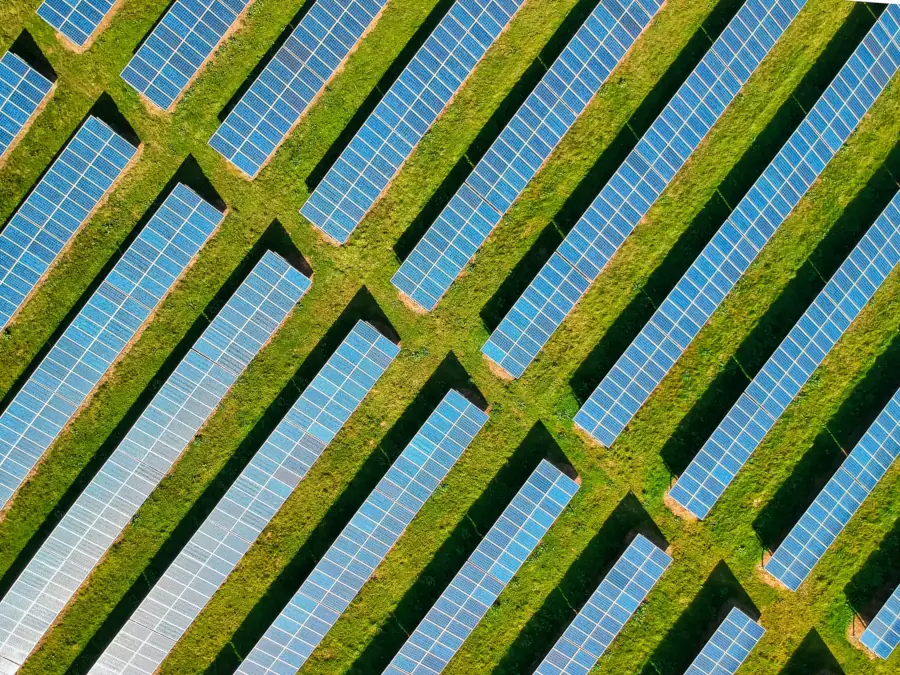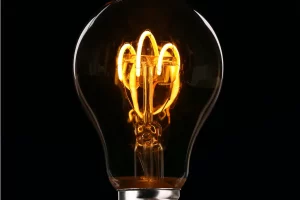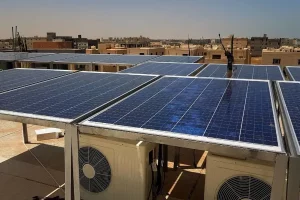As the world tries to cope with the consequences of climate change and the need for a sustainable future becomes increasingly urgent, the adoption of renewable energy sources has emerged as a key solution. With the residential sector accounting for a significant portion of global energy consumption, harnessing renewable energy within our homes holds tremendous potential for mitigating environmental impact and transitioning towards a cleaner, more resilient energy system.
The traditional reliance on fossil fuels for powering homes not only contributes to greenhouse gas emissions but also subjects households to rising energy costs and vulnerability to energy supply disruptions. However, by embracing renewable energy technologies, homeowners can take a proactive step towards reducing their carbon footprint, lowering energy expenses, and achieving energy independence.

Renewable energy sources such as solar power, wind energy, and geothermal systems offer homeowners an opportunity to tap into the abundance of natural resources readily available around us. Solar panels, for instance, have become increasingly affordable and efficient, allowing households to generate electricity from sunlight, slashing their reliance on the grid and even feeding excess energy back into it. Similarly, wind turbines can harness the power of the wind, while geothermal systems utilize the Earth’s natural heat to provide sustainable heating and cooling solutions.
The benefits of integrating renewable energy sources into residential buildings extend beyond environmental advantages. By investing in solar panels or other renewable technologies, homeowners can significantly reduce their energy bills, saving money in the long run. Additionally, renewable energy systems provide a level of energy security, shielding households from the volatility of fossil fuel prices and potential disruptions in the centralized energy supply chain.
Moreover, the adoption of renewable energy in homes promotes local job creation, spurring economic growth in the renewable energy sector. The installation, maintenance, and servicing of renewable energy systems create employment opportunities for skilled workers, stimulating the local economy and fostering a greener workforce.
In this article, we will explore the various renewable energy options available for homeowners, their advantages, potential challenges, and the steps individuals can take to integrate renewable energy into their homes effectively. By understanding the benefits and considerations of using renewable energy at the residential level, we can pave the way towards a more sustainable future while enjoying the immediate rewards of cleaner, more affordable, and resilient energy systems within our very own households.
What are the types of renewable energy
Renewable energy refers to energy sources that are naturally replenished and do not deplete over time. Here are some common types of renewable energy:
- Solar Energy. Solar power harnesses the energy from the sun using photovoltaic (PV) panels or solar thermal collectors to generate electricity or heat.
- Wind Energy. Wind turbines convert the kinetic energy of the wind into electricity. As the wind blows, it causes the blades of the turbine to rotate, which powers a generator.
- Hydropower. Hydropower utilizes the energy of flowing or falling water. It involves constructing dams or utilizing the kinetic energy of rivers and tides to drive turbines and generate electricity.
- Geothermal Energy. Geothermal energy utilizes heat from the Earth’s core to generate electricity or heat buildings. It involves tapping into hot water or steam reservoirs beneath the Earth’s surface.
- Biomass Energy. Biomass refers to organic matter derived from plants and animals. Biomass energy is obtained by converting these materials into fuels, such as wood pellets, biofuels, or through processes like anaerobic digestion.
- Tidal Energy. Tidal power involves harnessing the energy from tidal movements. It uses tidal turbines or barrages to capture the kinetic energy of the rising and falling tides and convert it into electricity.
- Wave Energy. Wave power utilizes the energy from ocean waves to generate electricity. Devices like wave buoys, oscillating water columns, or submerged turbines capture the wave energy and convert it into power.
- Hydrogen Fuel Cells. Hydrogen fuel cells generate electricity by combining hydrogen and oxygen to produce water vapor. The process is clean and emits only water as a byproduct, making it a promising renewable energy technology.
These are some of the major types of renewable energy sources. Each has its own advantages, challenges, and applications, and they play a crucial role in reducing reliance on fossil fuels and mitigating climate change.
Why anyone should consider renewable energy
There are several reasons why renewable energy should be considered and prioritized:
Environmental Benefits
Renewable energy sources produce minimal to no greenhouse gas emissions during operation, unlike fossil fuels, which contribute to climate change and air pollution. By shifting to renewable energy, we can reduce carbon dioxide and other harmful emissions, mitigating the impacts of climate change and improving air quality.
Sustainability
Renewable energy sources are inherently sustainable as they derive from naturally replenishing resources such as sunlight, wind, and water. Unlike fossil fuels, which are finite and depleting, renewable energy can be harnessed indefinitely without exhausting the source.
Jobs and Economic Growth
The renewable energy sector has the potential to create significant employment opportunities. Building and maintaining renewable energy infrastructure, such as solar and wind farms, require skilled workers, fostering job growth and economic development. Additionally, investment in renewable energy stimulates innovation, technological advancements, and new business opportunities.
Community Benefits
Localized renewable energy projects, such as community solar installations or wind farms, can empower communities by providing access to clean energy and reducing energy costs. Moreover, renewable energy projects often offer opportunities for community ownership and participation, enabling local communities to benefit economically.

Health Benefits
The use of renewable energy sources reduces the emission of pollutants associated with conventional energy generation, such as particulate matter, sulfur dioxide, and nitrogen oxides. By improving air quality, renewable energy can help prevent respiratory and cardiovascular diseases, ultimately promoting better public health.
What are disadvantages of renewable energy?
While renewable energy offers numerous benefits, there are also some disadvantages and challenges associated with its implementation. Here are a few of the drawbacks:
Intermittency
Some renewable energy sources, such as solar and wind, are intermittent and variable in nature. They depend on external factors like weather conditions, which can affect their reliability and consistency. Energy storage technologies and grid integration solutions are necessary to manage and balance the intermittent nature of renewable energy.
Geographical Limitations
Certain renewable energy sources are location-specific. For example, hydropower requires access to flowing water, and geothermal energy depends on suitable geological conditions. These limitations may restrict the widespread adoption of certain renewable energy technologies, especially in regions without suitable resources.
High Initial Costs
The upfront costs of establishing renewable energy infrastructure can be significant. Although the costs of renewable technologies have been decreasing, the initial investment required to install solar panels, wind turbines, or other renewable energy systems can be a barrier for some individuals, businesses, or communities.
Land and Resource Requirements
Large-scale renewable energy projects, such as solar and wind farms, may require substantial land areas for installation. This can pose challenges in densely populated regions or areas with limited available land. Additionally, the production of certain renewable energy technologies may rely on specific resources, such as rare earth elements for wind turbines or biomass feedstock for bioenergy, which could raise concerns about resource availability and sustainability.

Environmental Impact
While renewable energy sources generally have lower environmental impacts compared to fossil fuels, they are not entirely without potential negative consequences. For example, large-scale hydropower projects can result in habitat disruption, alter natural river flow patterns, and affect aquatic ecosystems. Biomass energy production may raise concerns about deforestation or the use of agricultural land for fuel crops.
Infrastructure and Grid
Integrating large amounts of renewable energy into existing energy grids may require significant infrastructure upgrades and investments. The grid infrastructure needs to be capable of accommodating variable power generation, managing bidirectional energy flows, and integrating energy storage systems.
Some renewable energy technologies are still in the early stages of development and face technological challenges. For instance, energy storage solutions need further advancements to provide efficient and cost-effective long-term storage options. Ongoing research and development are necessary to overcome these limitations.
Despite these disadvantages, it’s important to note that many of them are being actively addressed through technological advancements, policy support, and continued research. Overcoming these challenges will help accelerate the transition towards a more sustainable and renewable energy future.
So is it time to move to renewable energy?
The transition to renewable energy within our homes is not just a mere choice; it is a vital step towards building a sustainable and resilient future. As we face the pressing challenges of climate change and strive for energy independence, harnessing the power of renewable sources becomes an imperative for homeowners worldwide.
By embracing renewable energy in our homes, we can actively contribute to mitigating climate change, reducing our reliance on fossil fuels, and protecting our environment for future generations. Not only do these sustainable energy choices offer a tangible way to make a positive impact, but they also provide homeowners with greater control over their energy consumption and costs.



